Top 20 Most Admired Wine Brands in the World
 |
| Photo: KnowInsiders. |
The brands were chosen by an academy made up of the world’s leading wine experts, including buyers, sommeliers, wholesalers, bar owners, Masters of Wine, writers, and educators from 48 countries.
Familia Torres from Spain took the number one spot in the rankings after impressing the MAW academy with the quality and consistency of its wines. It also was awarded the Most Admired Wine Brand in Europe.
Catena, a family-owned winery in Mendoza with a reputation for producing some of the world’s finest Malbec, finished second, retaining its crown as the Most Admired Wine Brand in South America.
Another Spanish brand, Vega Sicilia, finished third. Australian brand Henschke was fourth, taking the regional award for the Most Admired Wine Brand in Australasia. Chilean powerhouse Concha y Toro completed the top five positions.
Europe was the clear winner in terms of region, contributing 29 brands to the list, led by France with 11 brands, Spain with eight, and Italy with six.
The highest new entry this year was Domaine de la Romanée-Conti, which entered the list for the first time at number 7. Sicilian brand Planeta was the highest climber after rising 22 places year-on-year to number 17, according to Drinksint.
Top 20 most admired Wine Brands 2021
1. Familia Torres, Spain
2. Catena, Argentina
3. Vega Sicilia, Spain
4. Henschke, Australia
5. Concha y Toro, Chile
6. Penfolds, Australia
7. Domaine de la Romanée-Conti, France
8. CVNE, Spain
9. Antinori, Italy
10. Château Musar, Lebanon
11. E. Guigal, France
12. Château Lafite, France
13. Errazuriz, Chile
14. Felton Road, New Zealand
15. Villa Maria, New Zealand
16. Yalumba, Australia
17. Planeta, Italy
18. Château Cheval Blanc, France
19. M. Chapoutier, France
20. Château d’Yquem, France
1. Familia Torres, Spain
 |
| Photo: torres |
2. Catena, Argentina
 |
| Photo: southamericawineguide |
Nicolás Catena Zapata dared to plant vines where no one thought they would ripen. His high-altitude wine revolution culminated in the discovery of a new terroir for wine –the Adrianna Vineyard– located at almost 5,000 feet (1500 meters) elevation. Adrianna Vineyard is organically farmed, certified sustainable, and the focus of study of the Catena Institute of Wine (CIW) founded by Dr. Laura Catena, which is dedicated to elevating Mendoza as a wine region and preserving nature and culture. A team of researchers at the CIW continuously study every meter, every rock, every insect, and every microorganism in the Adrianna Vineyard, making it perhaps the most studied vineyard in the world.
The Catena Zapata Adrianna Vineyard 100-point Collection releases the three 100-point wines awarded by James Suckling: Adrianna Vineyard White Bones Chardonnay 2018, Adrianna Vineyard River Stones Malbec 2017, and the Adrianna Vineyard River Stones Malbec 2016 scored by The Wine Advocate, Robert Parker. These perfect scores validate the importance of studying terroir and have inspired experts to refer to Adrianna as South America’s Grand Cru vineyard. Catena Zapata has once again demonstrated its singularity by being the first to produce a 100-point white wine by James Suckling and the first to produce a 100-point red wine by The Wine Advocate, Robert Parker in the entire American continent, Watsonswine noted.
3. Vega Sicilia, Spain
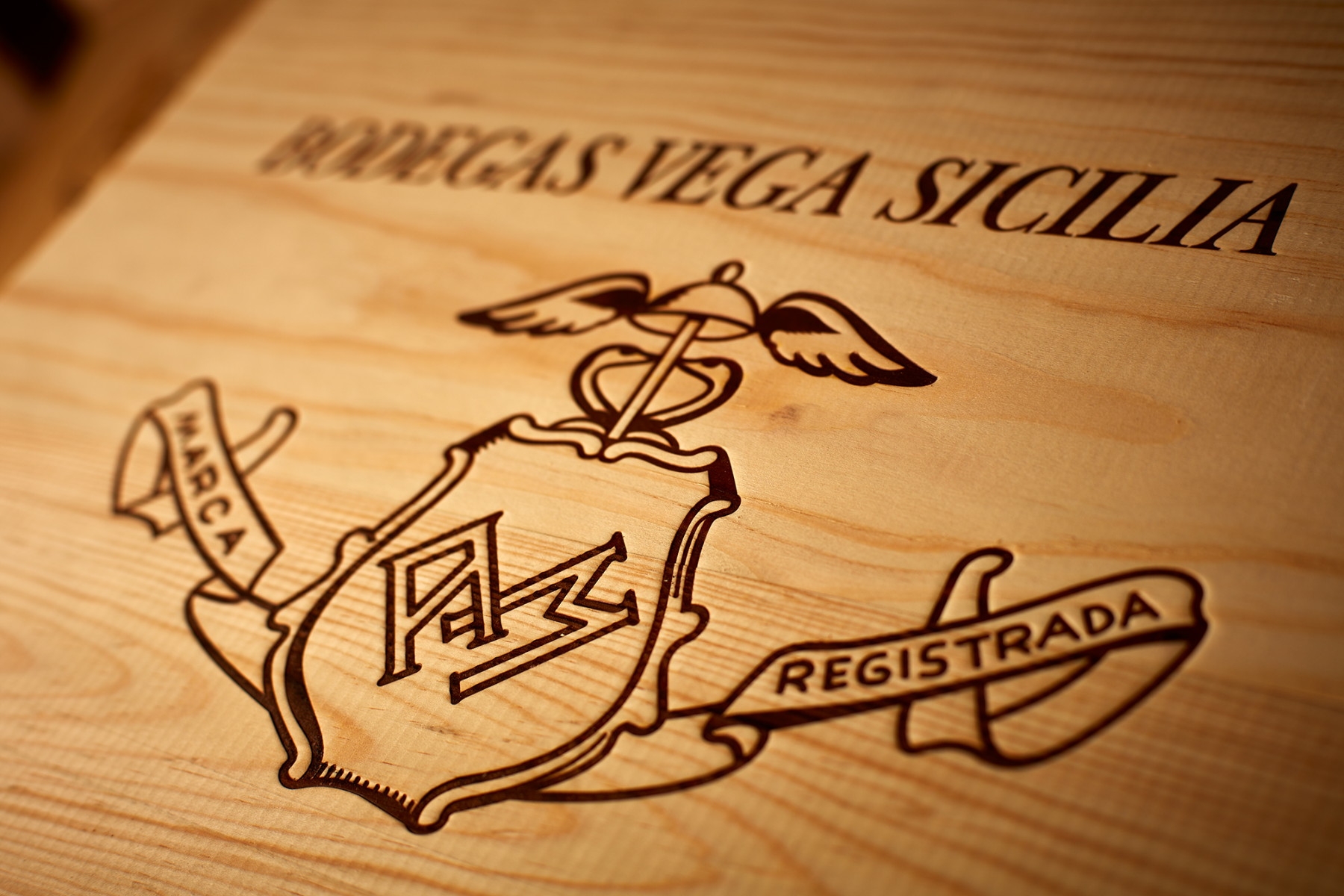 |
| Photo: thedrinksbusiness |
Vega Sicilia is widely regarded as the greatest wine producer in Spain. The estate in Ribera del Duero is known for its dense, complex red wines made principally from the Tinto Fino (Tempranillo) grape variety. Its top wine, Unico, is one of Spain's most expensive and sought-after wines.
The Vega Sicilia estate covers around 1000 hectares (2470 acres) of which around 210ha (520 acres) is under the vine. It has been in operation since 1864, long before the development of the appellation in which it resides, and the current wine styles date from the 1910s. Quality has become more consistent since the current owners, the Alvarez family, took over in 1982.
The vineyards are planted to around 80 percent Tempranillo with the remainder taken up by Cabernet Sauvignon, Merlot, and tiny amounts of Malbec. Yields are kept low, aided by green harvesting and painstaking grape selection. Winery operations are just as meticulous, with a complicated series of rackings from large barrels to barriques, mixing old and new oak and leading to wines that are capable of long aging.
TEMPOS Vega Sicilia is today more than wine, it is the symbol of the pride of a job well done, of the value of knowing how to wait for excellence. It is the result of the wisdom of the land, time, and all those who believed and believe in it.
4. Henschke, Australia
 |
| Photo:theupsider |
Founded in 1862 by Silesian immigrants, Henschke is one of the oldest wine producers in Australia and remains under the ownership of the family. Winemaker Stephen Henschke, educated at the Geisenheim Institute in Germany, and his viticulturist wife Prue are generally considered to be among the leading wine authorities in the country.Henschke is a wine estate in South Australia that produces a range of wines from the Eden Valley and surrounding subregions. It is particularly known for the intense, full-bodied Hill of Grace, made from Shiraz vines that are up to 150 years old, and its sibling from the Mount Edelstone vineyard. The former is one of the most expensive wines to be made in Australia, whilst the Mount Edelstone Shiraz is often thought of as being of similar quality at a more affordable price.
A wide range of wines is made from a handful of different vineyards, which are farmed according to biodynamic principles. Three of these are in the Eden Valley, in the cooler part of the Mount Lofty ranges just to the east of the Barossa Valley. The Hill of Grace vineyard is regarded as the hallowed ground of the Australian wine industry and has 20 acres (8ha), of which half is planted to low-yielding vines on their own rootstocks. The oldest block is known as the Godfathers; these vines date from the 1860s and are amongst the oldest in the winemaking world. While the Hill of Grace wine is made from Shiraz, the vineyard also has Sémillon, Riesling, and Mataro (Mourvèdre) which go into other labels in the portfolio, Wine-Searcher wrote.
5. Concha y Toro, Chile
 |
| Photo: conchaytoro |
On this occasion, the winery placed fifth globally and first among Chilean wineries, standing out for its variety, consistent quality, and strong market presence. For a fifth consecutive year, the Chilean subsidiary Concha y Toro has been named among the top five World’s Most Admired Wine Brands, according to a survey of industry professionals carried out annually by British publication Drinks International.
Founded in 1883, Viña Concha y Toro is Latin America’s leading producer and occupies an outstanding position among the world’s most important wine companies, currently exporting to 130 countries worldwide. Uniquely, it owns around 11,600 hectares of prime vineyards in Chile, Argentina, and the United States. The Concha y Toro Group comprises a wide range of successful brands from the top of the range Don Melchor and Almaviva to the flagship brand Casillero del Diablo, in addition to the Trivento brand from Argentina and Fetzer from California. The company is headquartered in Santiago, Chile., Wineindustryadvisor cited.
6. Penfolds, Australia
 |
| Photo: justwines |
The success of Penfolds has been driven by the generations of visionaries and innovators. From the beginning in 1844 to today, the merging of science, art, and innovation has driven Penfolds to become one of Australia's most famed and respected winemakers.
An illustrious South Australian house, deeply rooted in tradition, Penfolds is one of the iconic producers in the world. In 1844, Penfolds was founded by Christopher and Mary Penfold who arrived in Australia from Sussex, England and began the 500-acre Penfolds estate in Adelaide. Upon Christopher’s tragic death, Mary began initially blending wines that were two to three years of age, moving away from fortified wines. For many years Penfolds remained the largest wine producer in South Australia. Then in the 1940s famed Penfolds winemaker Max Shubert crafted their first iconic 'Grange Hermitage' wine which was later simply named 'Grange.' In the 1960s the company introduced a series of red wines: Bin 389, Bin 707, Bin 28, and Bin 128, that became the key parts of the Penfolds brand. Today, Penfolds continues to produce world-class wines, and the overall quality is not only amongst the best in Australia but in the world, Internationalwinereport quoted.
7. Domaine de la Romanée-Conti, France
 |
| Photo: winespectator |
Romanée-Conti, a grand cru climat of the Vosne-Romanée appellation, is quite easily one of the most famous vineyards in the world. It covers just 1.81 hectares (4.47 acres) of vines on the midslope of the Côte d'Or and is a monopole of Burgundy's iconic Domaine de la Romanée-Conti. The vineyard makes a single Pinot Noir that is one of the most expensive and sought-after wines in the world.
The climat sits at the center of Vosne-Romanée's six grand cru vineyards and is bounded by Romanée-Saint-Vivant, Richebourg, La Grande Rue, and the tiny La Romanée vineyard. It is roughly square in shape, measuring just 620ft (190m) across, making it one of the smallest appellations in France.
Vines were first planted on this part of the Côte d'Or by the monks of the Saint-Vivant abbey in the Middle Ages. The land was acquired by the de Croonembourg family in the 17th Century and named La Romanée.
8. CVNE, Spain
 |
| Photo: cvne |
CVNE (Compañía Vinícola del Norte de España) is one of the most renowned and historic bodegas in all of Spain. Founded in 1879 by the Real de Asúa brothers, Eusebio and Raimundo, the company has been an integral part of the Rioja region’s ascendance in the world of fine wine. With their combination of traditional roots and innovative vision, CVNE has been one of Rioja’s most reliable sources for high-quality wine. The company is still run by descendants of the Real de Asúa brothers, now represented by the fifth generation with current CEO Victor Urrutia Ybarra.
Since its founding, CVNE’s goal has been to increase the scope of production while maintaining the level of quality on which its reputation was built. Forty years after the original bodega was created, CVNE expanded into the Alavesa region with the separate Viña Real facility; each winery’s flagship bottlings occupy a well-deserved place in the pantheon of great Spanish wine.
9. Antinori, Italy
 |
| Photo: antinori |
Antinori is one of the most important and appreciated families throughout the world for the production of great wines. To trace the origin of this bond is necessary to go back to 1385 when Giovanni di Piero Antinori joined the Florentine art of Vinattieri. 26 generations have passed by now, but in all these centuries the name Antinori has been able to shine more and more and conquer the palates of many wine lovers. Antinori is synonymous with history and tradition, has now become an integral part of Italian wine culture, the development of which has collaborated in an active, year after year. At the first estates in Tuscany and Umbria others have followed, confirming the passion and vision of this family. Solaia is certainly one of the most popular Italian wines in the world, a symbol of a constant search for quality implemented by Antinori. The Tignanello is certainly a name to the foreground, without forgetting the Brunello di Montalcino and Chianti, all of the highest level. Tradition and honor are intertwined in the name Antinori, a name which has become legendary in the course of many centuries and which today confirm, day after day, the reasons that lie behind such an important event, Callmewine told.
10. Château Musar, Lebanon
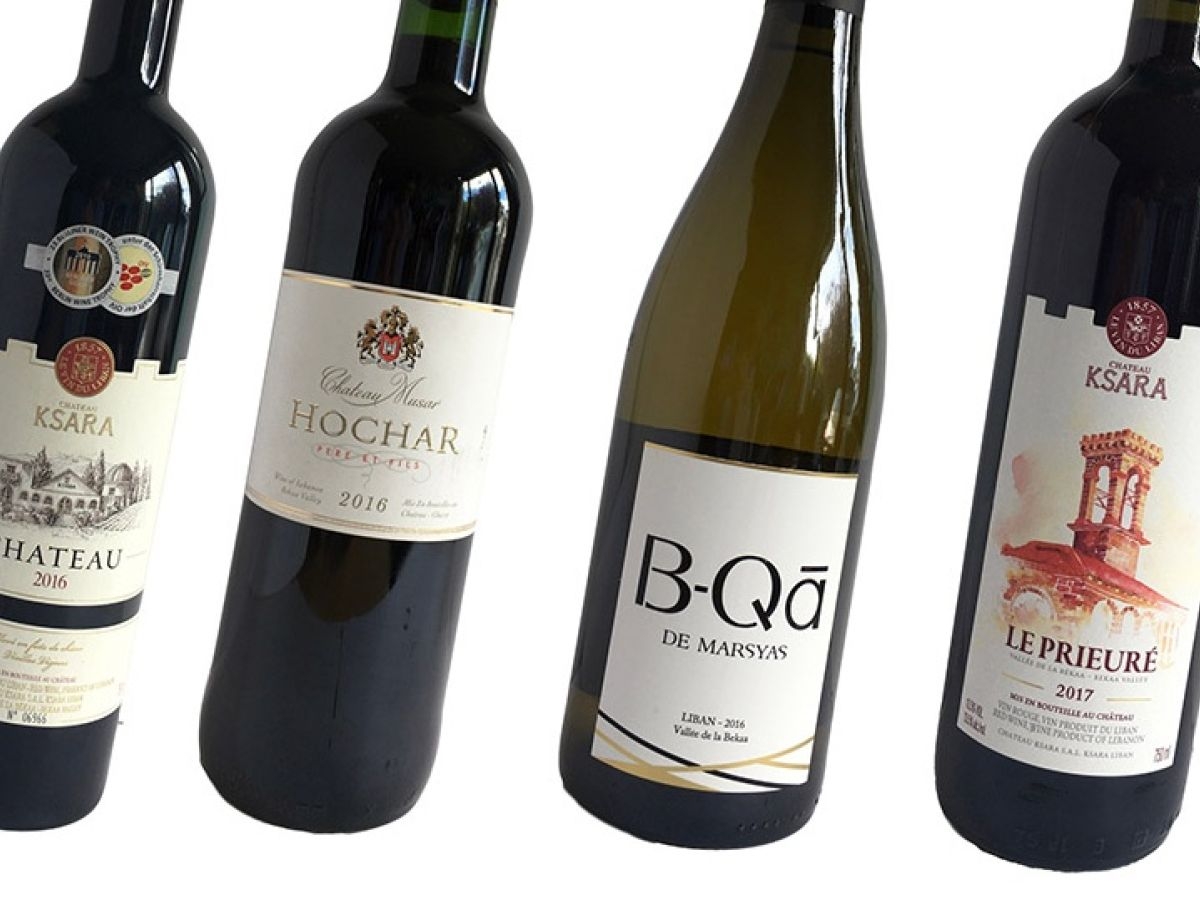 |
| Photo: irishtimes |
The vineyards of Chateau Musar are located at an altitude of over 3,000 feet in the beautiful Bekaa Valley of Lebanon. This world-famous wine, produced by The Hochar Family continues to win acclaim from all sectors of the winepress, it is characterized by its complicated, full-bodied texture which is made from Cabernet Sauvignon and Cinsault grapes. It is aged for up to 24 months in Nevers oak before being bottled and stored in cellars and only released after its fifth year, Sandhamswine reported.
Musar's flagship red wine, made from a blend of Cabernet Sauvignon and Cinsaut, is the most important wine made in Lebanon. It is fermented in concrete, aged for one year in French oak, and then rested in the Musar cellars for at least three years before release – sometimes many more. It is famous for its great (intentional) vintage variation and is highly collectible.
11. E. Guigal, France
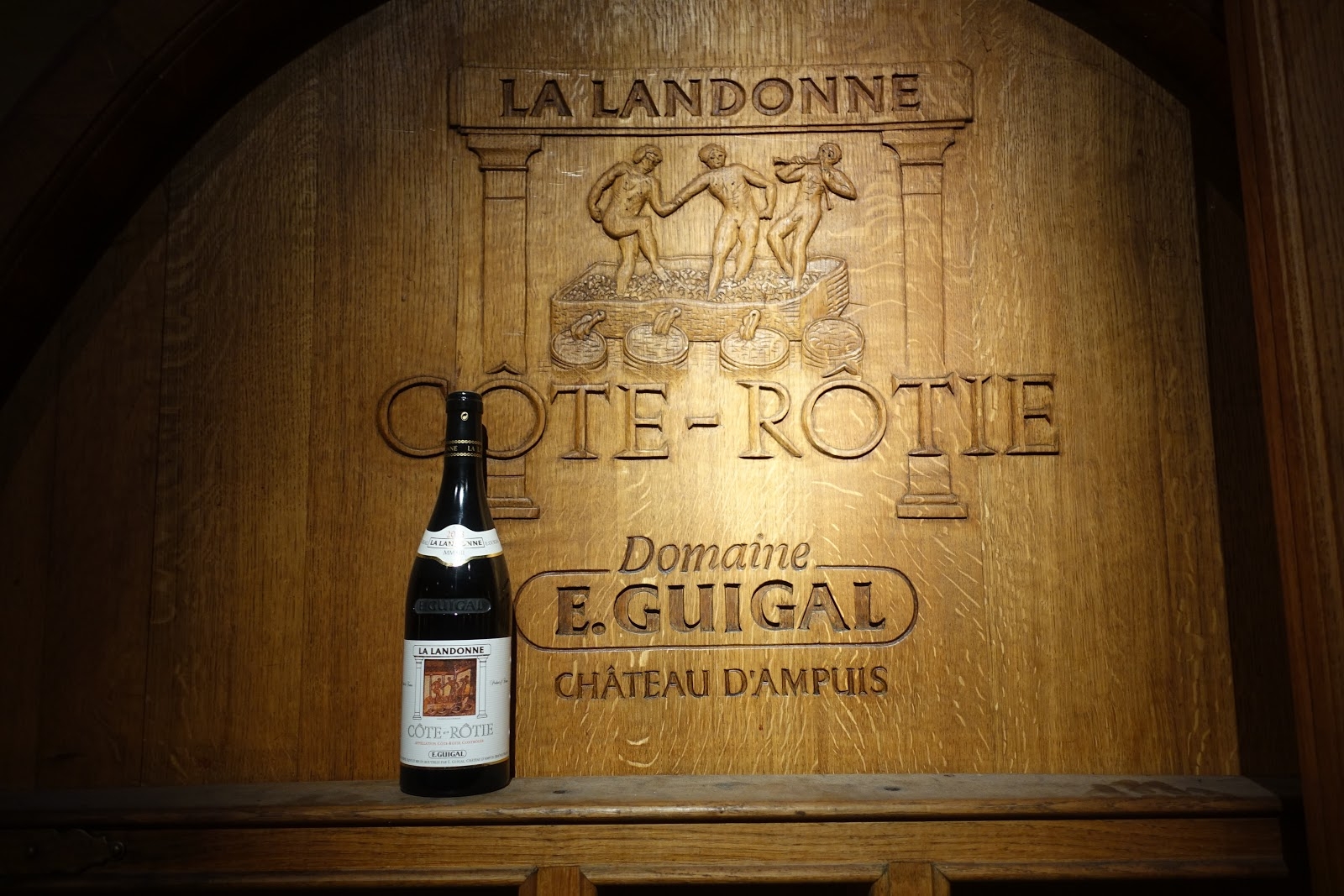 |
| Photo: schiller-wine |
Land with 24 centuries of history behind it, worked and preserved by three generations of winemakers with family values at their core and a commitment to an illustrious terrain that produces prestigious wines. This, in a nutshell, is the Maison Guigal. Right from the beginning the motto, “No Pains No Gains” underpins the promise made to Etienne Guigal. A commitment to work together to follow in his footsteps, to communicate the family’s passion, and create so many emotions. Today, Marcel and Philippe, along with their wives, are the guardians of this exceptional domain which combines history, devotion, and a sense of togetherness. A breath of inspiration for generations to come.
Ampuis lies to the south of Lyon at the very heart of the Côte-Rôtie appellation. Here, on the stark and steep terrain formed by the Rhône River cultivated in terraces since ancient times, the Guigal family works the greatest appellations of the Rhône Valley with both passion and perseverance.
Today, the domain is made up of numerous exceptional vineyards: Côte-Rôtie, Condrieu, Hermitage, Châteauneuf-du-Pape, Saint-Joseph, Crozes-Hermitage... Outstanding plots producing prestigious wines which showcase the excellence of this domain, Guigal noted.
12. Château Lafite, France
 |
| Photo: galeriemagazine |
While the first known reference to Lafite dates to 1234 with a certain Gombaud de Lafite, abbot of the Vertheuil Monastery north of Pauillac, Lafite’s mention as a medieval fief date to the 14th century. The name Lafite comes from the Gascon language term “la hite”, which means “hillock”. There were probably already vineyards on the property at the time when the Ségur family organized the vineyard in the 17th century, and Lafite began to earn its reputation as a great winemaking estate. Jacques de Ségur was credited with the planting of the Lafite vineyard in the 1670s and in the early 1680s. In 1695, Jacques de Ségur’s heir, Alexandre, married the heiress of Château Latour, who gave birth to Nicolas-Alexandre de Ségur. The wine histories of the fiefs of Lafite and Latour were thus joined at the outset.
The vineyard consists of three main areas: the hillsides around the Château, the adjacent Carruades plateau to the west, and 4.5 hectares in neighboring Saint Estèphe. The vineyard covers 112 hectares and is well-drained and well-exposed, with soil made up of fine deep gravel, mixed with aeolian sand on a subsoil of tertiary limestone. It is well-drained and well-exposed to the sun.
The grape varieties are Cabernet Sauvignon (70%), Merlot (25%), Cabernet Franc (3%) and Petit Verdot (2%).
The average age of the grapevines is 39 years old. But it should be noted that vines younger than 10 years old are not used in the Grand Vin. This means that the average age of the vines used in the Grand Vin (Château Lafite Rothschild) is closer to 45 years. The oldest plot, called “La Gravière, was planted in 1886, according to Lafite.
13. Errazuriz, Chile
 |
| Photo: twitter |
In the 22nd version of Descorchados Guide, the most influential wine guide written by Chilean wine journalist Patricio Tapia which recognizes the best exponents of Chile, Viña Errázuriz stands out among the best wines in the rankings of the publication.
The wines from the Aconcagua Costa, Aconcagua Alto, and Max ranges were also recognized with high scores, over 93 points, strengthening the winery’s long path in this publication.
Las Pizarras Chardonnay 2018 once again was positioned among the best white wines of the guide, also getting important recognitions as The Best Chardonnay and The Bests of Aconcagua, with 96 points.
In addition, its equivalent, Las Pizarras Pinot Noir 2018 also was awarded 96 points, positioning as The Best Pinot Noit of Chile.
Both wines come from the Aconcagua Costa appellation, the coastal area of the Aconcagua Valley, located 12 km from the Pacific Ocean, Errazuriz reported.
14. Felton Road, New Zealand
 |
| Photo: centralotagonz |
Felton Road is a wine estate in the Central Otago sub-region of Bannockburn. It is one of New Zealand's best known and most highly respected producers, and its Pinot Noir wines are considered some of the best expressions of that variety in the New World. Felton Road also makes several key wines from Riesling and Chardonnay.
The estate comprises three vineyards on warm, north-facing slopes in Bannockburn: the original Elms vineyard, the Macmuir vineyard, and the Calvert vineyard. Elms was first planted in 1992 and are where most of the 'Block' series wines come from. Added to these is a 9-hectare (22-acre) Cornish Point vineyard, which became a part of Felton Road's holdings when it was bought in 1998 by Nigel Greening.
Felton Road harvests grapes by hand, and follows the minimal intervention ethos in the winery, with gravity-fed systems, wild yeasts and malolactic fermentation, and no fining or filtration in the red wines. The Pinot Noir wines are all made the same way: around a quarter of the fruit is kept as whole bunches, and there is a 5-10 day cold soak before a wild ferment. After fermentation, the standard Felton Road Pinot Noir spends 11 months in barrel, and the top wines spend 15 to 18 months.
Felton Road is also known for its Riesling. There are two in the standard range that is made in a similar way – a dry Riesling and a Riesling with 65g/l of residual sugar. The Block 1 Riesling, Felton Road's top white wine, is grown on heavier soils and shows a rounder texture with tropical passionfruit flavors.
15. Villa Maria, New Zealand
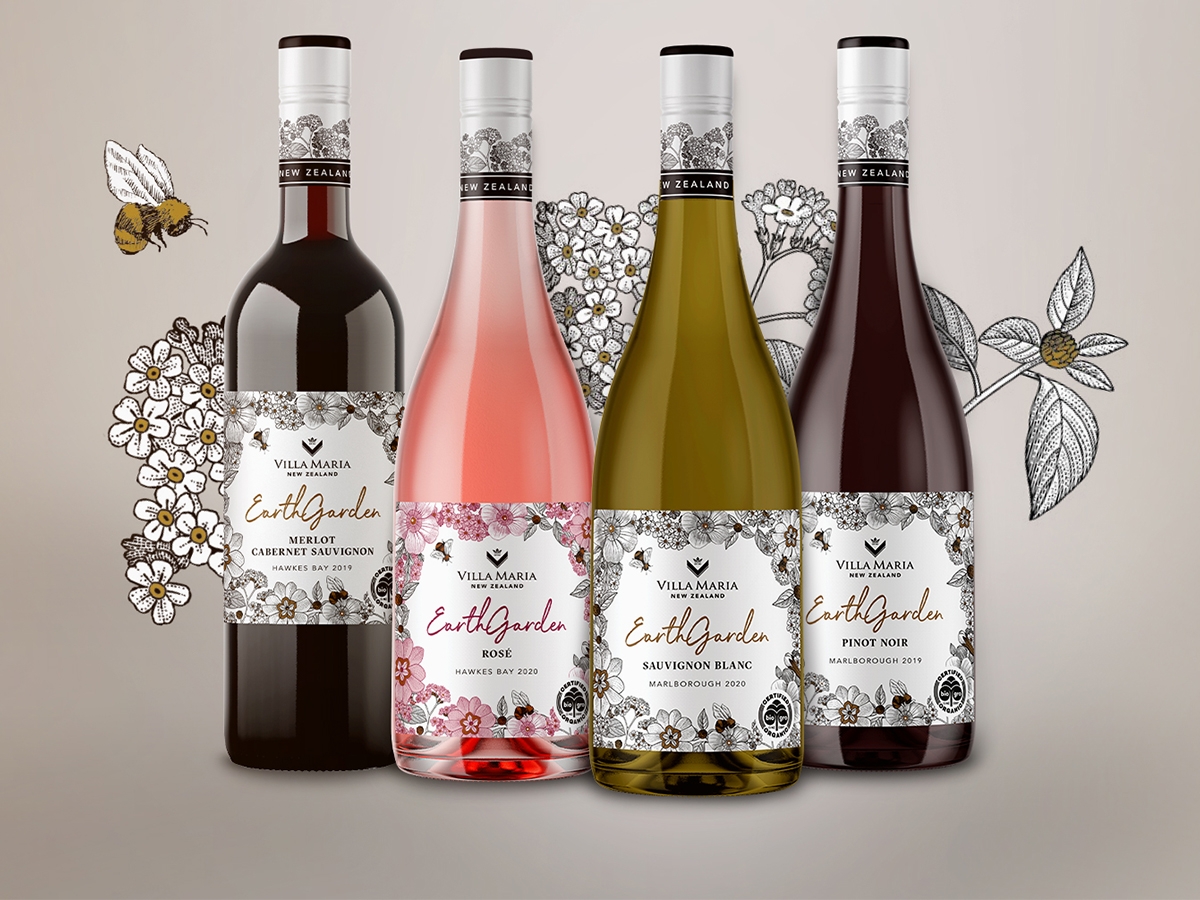 |
| Photo: theshout |
Established in 1961 Villa Maria is one of the largest New Zealand wineries with annual production in the region of 500 000 cases. Wines are made from fruit grown in Marlborough, Hawkes Bay, and Gisborne. Three tiers of wine are made, beginning with the affordable Private Bin range, and progressing through the Cellar Selection range to the high-end Reserve range. Quality is very high across the board. I’m particularly keen on what Villa Maria is doing with Pinot Noir. Most of the Pinot Noir vines are high-quality Dijon clones, and all grapes are hand-picked from low-yielding vines. In the winery, open fermenters with hand plunging are employed, and the results are impressive, Wine said.
Each wine is crafted in the unique, fruit-driven style of New Zealand, showcasing the very best of the country’s distinct wine regions. Villa Maria sources grapes from New Zealand’s premium grape-growing regions, including Marlborough and Hawkes Bay, and produces wines in state-of-the-art winemaking facilities in Auckland and Marlborough. The winery Sir George Fistonich started in 1961 is still family-owned and stands as an icon of superior quality and innovation in New Zealand winemaking. Villa Maria was also the first wine company in New Zealand to declare the winery a “cork-free zone,” sealing all wines from the 2001 vintage onwards with a screw cap to ensure quality in every bottle. Dedicated to minimizing environmental impact, Villa Maria has pioneered sustainable viticulture and winemaking since the 1990s and is one of the very few wineries that have acquired four certifications as proof of the ongoing commitment. Respected global beverage journal Drinks International has named Villa Maria as New Zealand’s Most Admired Wine Brand from 2015 to 2019 for consistently outstanding focus on quality.
16. Yalumba, Australia
 |
| Photo: winedering |
Yalumba, in South Australia, was founded by Samuel Smith in the mid-1800s, taking its name from the Aboriginal word for "all the land around". After releasing its first wine in 1853, Yalumba is now at the forefront of the Australian wine industry, making wines from classic Australian grapes like Shiraz, Cabernet Sauvignon, and Chardonnay but also those that are more often found in the northern hemisphere, such as Viognier, Sémillon and Sangiovese.
Yalumba has vineyards in the Barossa and Eden valleys and a portfolio of more than 40 different wines. This includes old-vine wines, single-varietal wines, and the Fine and Rare collection as well as an organic range and their entry-level Y series. The Fine and Rare Collection is the pinnacle of the expressions in the Yalumba portfolio and encompasses fine single-varietal and blended releases.
17. Planeta, Italy
 |
| Photo: hattonsrtwstore |
For five centuries and seventeen generations, the Planeta family has been involved in Sicilian agriculture. Their work on the island has contributed to the revitalization of Sicilian winemaking, now one of the most dynamic and sought-after viticultural regions in the world.
Planeta’s journey begins at Sambuca di Sicilia, on the estate owned by the family since the 1600s. Here on Italy's most enchanting island, three enthusiastic young Sicilians, Alessio, Francesca, and Santi Planeta, under the guidance of Diego Planeta, began their winemaking venture in the mid-1980s. Subsequent years were spent matching the extraordinarily diverse Sicilian soils with both indigenous and international varieties. Years of careful research paid off when the Planeta wines were met with immediate critical acclaim upon introduction in the U.S. in the late 1990s, Taubfamilyselections wrote.
18. Château Cheval Blanc, France
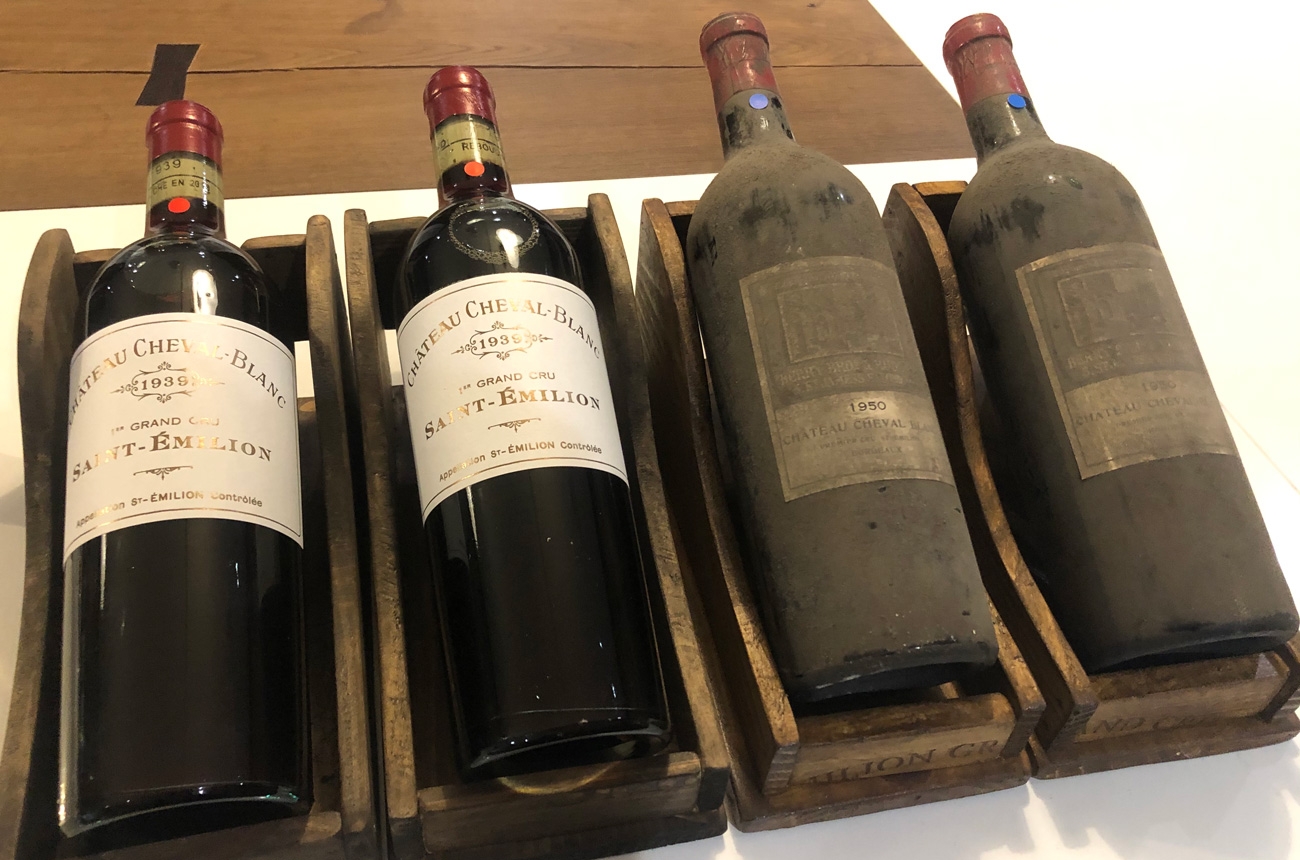 |
| Photo: decanter |
Chateau Cheval Blanc, which is translated into white horse has a long, colorful history in Saint Emilion that is traced back to 1832. That was the year the Ducasse family purchased land from the much larger estate of Chateau Figeac.
To produce the wine of Cheval Blanc, vinification takes place in 67 different temperature-controlled, cement vats that vary in size, due to the needs of specific parcels to allow for each parcel being vinified in its own tank. There are 14 different sizes of vats used in the fermentation process. Malolactic Fermentation takes place in the tank.
The wines are aged in 100% new, French oak barrels for close to 18 months before bottling. The Technical Director for Chateau Cheval Blanc is Pierre-Olivier Clouet, who has been a great addition to the Cheval Blanc team. Pierre-Olivier Clouet maintains that same responsibility for all their Saint Emilion estates, according to Thewinecellarinsider.
19. M. Chapoutier, France
 |
| Photo: decanter |
Michel Chapoutier is one of the most highly regarded winemakers in France. Since taking over his family firm in 1990 at age 26, Michel has transformed the winery into the leading Rhône Valley producer.
He combines the modern and the traditional: crusading for biodynamic winemaking while expanding operations around the globe and experimenting with innovative winemaking techniques.
This restless energy and unconditional commitment to quality have produced tremendous success. In 2003 alone, Maison M. Chapoutier's wines garnered 89 ratings of 90+ points, 13 ratings of 100 points, as well as, broad acclaim from the most widely regarded publications including The Wine Advocate, Wine Spectator, International Wine Cellar, Wine & Spirits, and Wine Enthusiast. In the last three years, Robert Parker has awarded five of Michel Chapoutier's wines perfect 100-point scores. In 2019, M. Chapoutier was voted #5 in the world and ranks as the #1 French brand by the Worlds Most Admired wine Brands 2019, Terlatowines reported.
20. Château d’Yquem, France
 |
| Photo: vinous |
Château d'Yquem is a property in the Sauternes district of Bordeaux, making what is arguably the world's most famous dessert wine. It was the only Sauternes château rated as Premier Cru Supérieur in the official Classification of 1855 and is priced accordingly. Yquem can show stonefruit, mandarin, toast, and vanilla when young and develops rich complexity with age. In top vintages, it can be cellared for 50 years or more.
The Yquem estate, owned by the King of England in the Middle Ages, has produced late-harvest wine since at least the late 1500s. The 113-hectare (290-acre) vineyard is situated on the highest hill in Sauternes. The soils here are perfect for the production of sweet wine – warm, dry topsoil of pebbles and coarse gravel lies over a clay subsoil that retains generous water reserves, aiding with the development of noble rot, and there are around 60 miles (100km) of drains to prevent waterlogging. At any one time, around 12ha (30 acres) of vineyards are either fallow or have young vines not suitable for production.
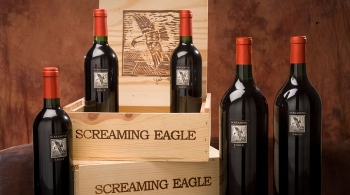 What Is The Most Expensive White Wine In The World So Far? What Is The Most Expensive White Wine In The World So Far? Wine comes in just about any kind of container you can imagine nowadays. If you’re looking to know the most expensive wine of all time? ... |
 What Is The Oldest Bottle Of Wine In The World? What Is The Oldest Bottle Of Wine In The World? Contemporary historians have been debating for a few years now if they should open the Speyer wine bottle, which is believed to be the world’s ... |
 The Best Red Wines To Drink In 2021/2022 The Best Red Wines To Drink In 2021/2022 There's so much red wine choice on the shelves nowadays it's easy to get overwhelmed by the options. Here in KnowInsiders, we have gathered the ... |


























